
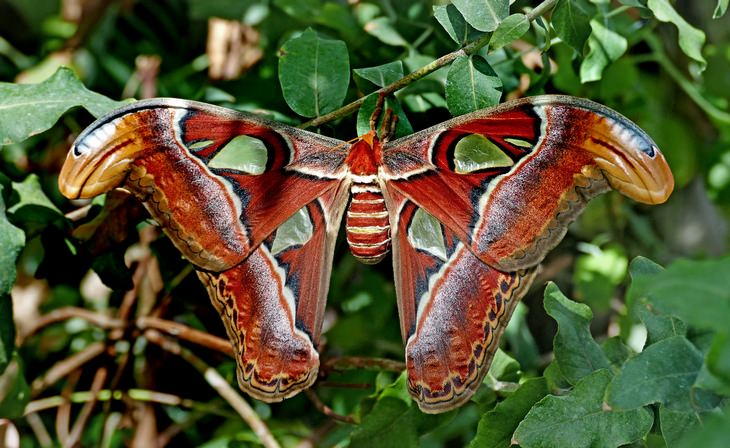 Source: Bernard Spragg. NZ
Source: Bernard Spragg. NZ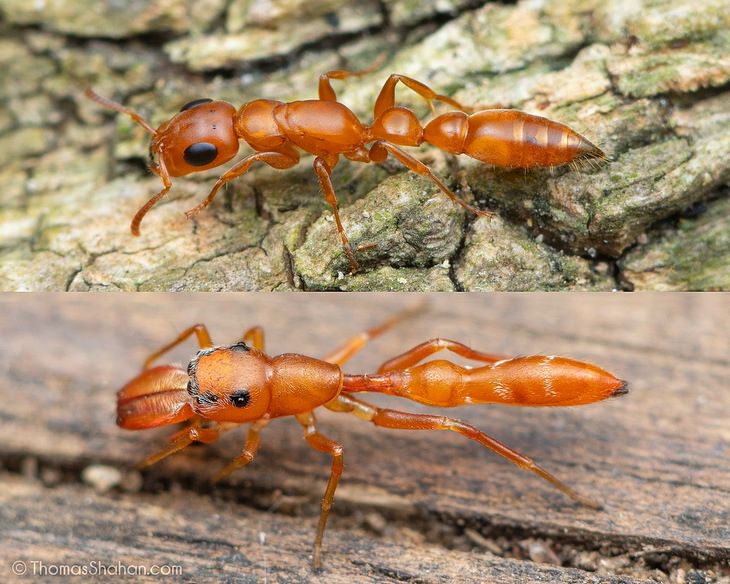 Source: Thomas Shahan
Source: Thomas Shahan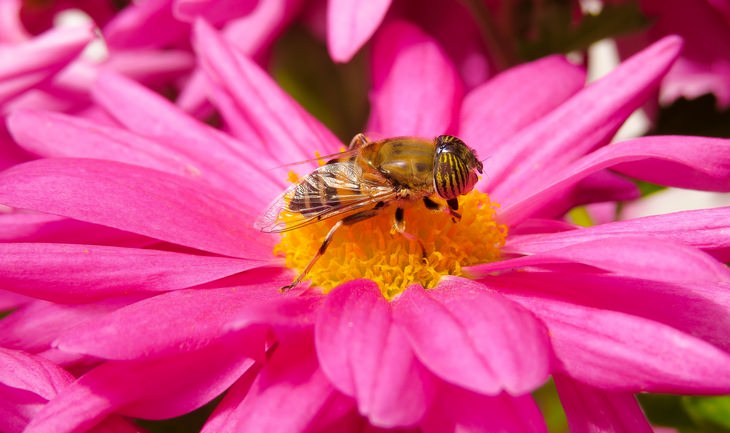 Source: Ana Sofia Guerreirinho
Source: Ana Sofia Guerreirinho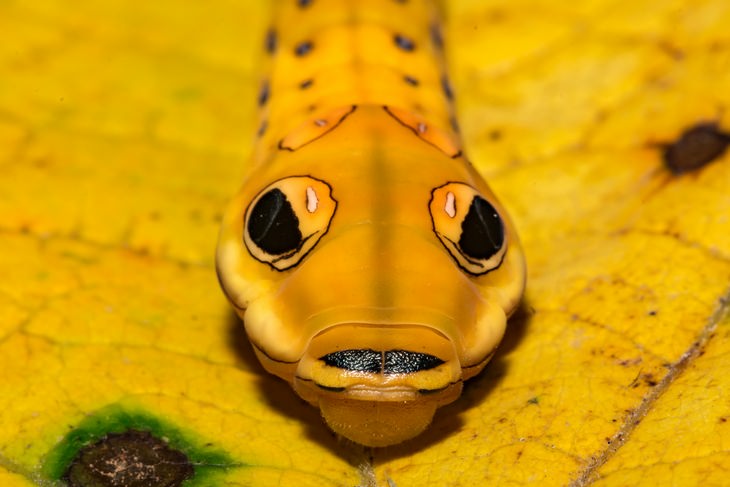

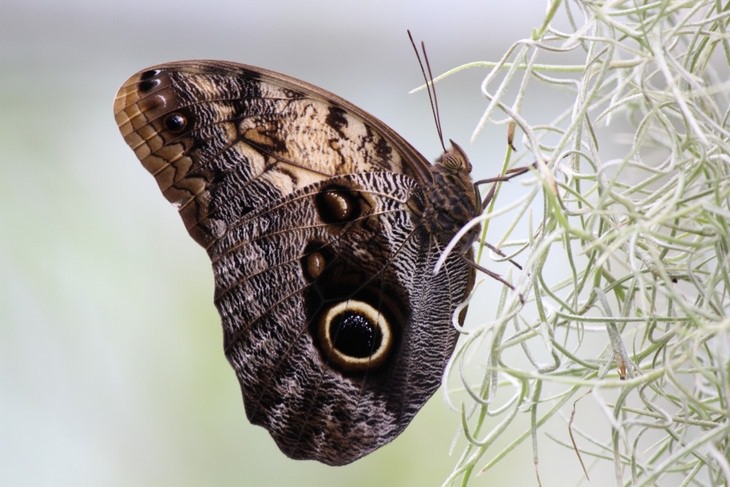
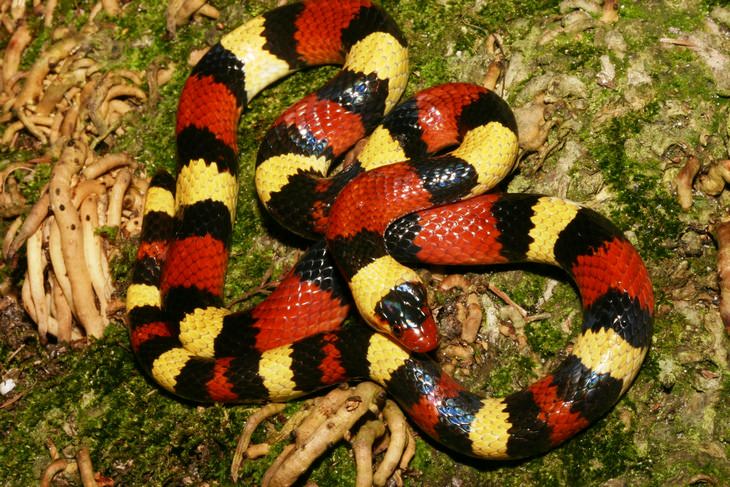 Source: Florida Fish and Wildlife
Source: Florida Fish and Wildlife
This Amazing Cat Proves How Clever and Capable Felines Are
Contrary to popular belief, cats are trainable. If you still aren’t convinced, it’s time you met Nipa, the talented cat that knows over 50 tricks.
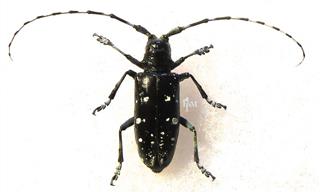
8 Dangerous Invasive Insects in the United States
Here’s a list of the worst invasive bugs in the United States, pictures included.
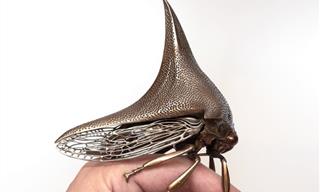
Accurate Replicas of Extinct Insects Made of Metal - Wow!
We are about to show you the most accurate and realistic metal replicas of insects and arthropods you will ever see!
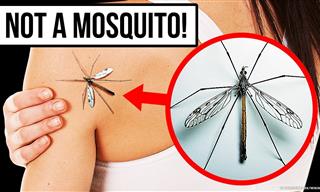 9:09
9:09
15 Bizarre Looking Insects and How to Behave Around Them
This video will introduce you to 15 of the most strange-looking bugs in nature, alongside some tips on how to behave around them to stay safe.
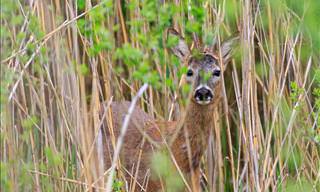
Test Your Eyes: Can You Find These Hiding Animals?
A fun game of hide and seek with camouflaged animals both large and small

20 Mindblowing Examples of Animal Camouflage
Nature truly is amazing! Take a look at these 20 photos, and see if you can spot the camouflaged creatures!

Then & Now: How Popular Dog Breeds Were Like a Century Ago
By comparing the photos of 15 dog breeds to their counterparts from 100 years ago, you'd find that some of them went through quite a transformation!
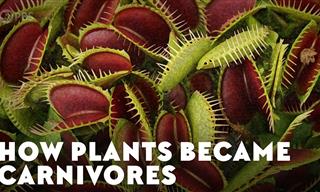 11:13
11:13
The Wild Origins Story of Carnivorous Plants
Carnivorous plants are the creepiest and most fascinating inventions of mother nature. Get a glimpse at the origins story of the villains of the flower world.
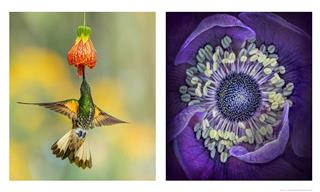
Gallery: 2024 Garden Photographer of the Year Winners
Check out the amazing winners of the 2024 Garden Photographer Of The Year Awards.

10 Rare Animal Species Found in Only One Location
These unique hyper-endemic species can only be found in one place in the whole world - so they're definitely worth discovering.
 16:28
16:28
Exploring a Cave that Has Its Own Forest, River and Clouds
Son Doong, the planet's most colossal cave, boasts a vast, self-contained ecosystem with its own distinct climate. ...
 10:01
10:01
Are These Extremely Rare Natural Phenomena Even Real?
Have you ever seen the physical edge of a rainstorm? What about a fire tornado? There is a reason why these natural phenomena are so rare...

The Unchallenged Beauty of 14 Waterfalls Worldwide
Admire the beauty and power of 14 picturesque waterfalls from every corner of the planet
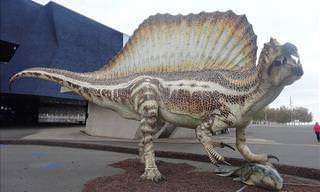
You Won't See These Massive Reptiles in Any Zoo
Your mind will be figuratively blown by the monumental size of these incredible dinosaurs and other reptiles that once roamed the Earth.

Witness The Magical World of Brazil’s Terra Ronca Cave
Treasures buried in the heart of the earth are not only silver and gold but also rare natural wonders. This is the Terra Runica Cave, enjoy your tour!

20 Jaw-Dropping Natural Landscapes That Grip Your Soul
It's impossible to put words to these glorious pictures. We just can't.

14 Gorgeous Flowers and the Beautiful Meanings Behind Them
We all enjoy the look and smell of flowers, but did you know that each flower has its own meaning? Learn the interesting symbolism behind 14 popular flowers.
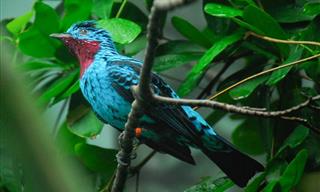
These Colorful Birds are Among the Most Vibrant!
These birds are so bright and beautiful that it's actually hard to believe they're real. Take a look at these 19 kaleidoscopic bird species for yourself.

The Complete Guide to Flower Etiquette!
Flowers are perfect for every event. This guide explains when to gift the perfect flower.

You've Probably Never Seen Trees Like These Before...
Trees are our life-source. They give off the oxygen that we need to breathe, but they also make the world a beautiful place. Here are some gorgeous photographs of the world's most spectacular trees.
 9:32
9:32
Ocean Showdown: Orcas Take on Humpback Whales
There's a reason why orcas can never get along with humback whales...
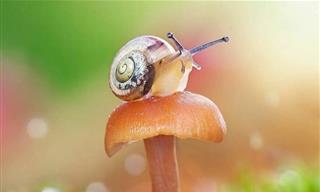
Tiny Animals in Stunning Detail: 16 Macro Photos
These macro shots reveal the intricate beauty of tiny insects and creatures.
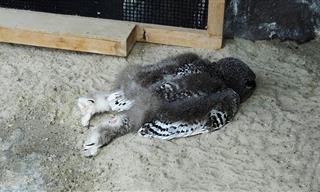 10:20
10:20
The Many Strange and CUTE Ways Animals Sleep…
Have you ever wondered how animals sleep? Discover some of the strangest and cutest sleeping habits in the animal kingdom.
 8:22
8:22
15 Weird Dog Behaviors Explained
Join us as we unravel the secrets of doggy behavior, helping you to connect more deeply with your loyal companion.
 5:16
5:16
This Bird is a Legendary Master of Disguise
This bird might be right in front of you, and you'll never know it!
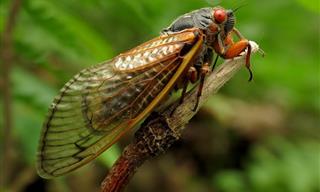
The Natural Phenomenon That Will Take Place This Spring
This year, for the first time since 2004, millions of cicadas will re-emerge from underground and swarm the country. This is what you can expect.
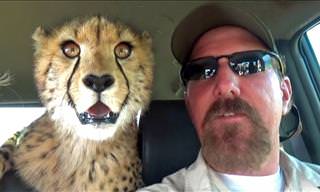 6:55
6:55
Cute Cheetah Cubs Take Their First Try at Hunting!
These young cheetahs take their first leap towards adulthood by trying to hunt down a speedy rabbit.
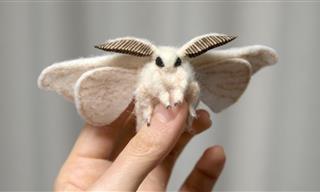 12:01
12:01
21 Incredible Moth Species You Just Have to Meet
Introducing you to 21 remarkable moth species you may like to meet.
 18:53
18:53
BBC Nature: Best of North American Animals
In this BBC animal video, we get a look at 5 of the most interesting animals in North America.
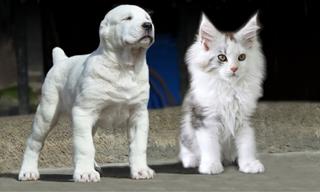 6:28
6:28
10 Cat Breeds That Act More Like Dogs
In this video we are going to introduce you to 10 species of cats that act almost like dogs!
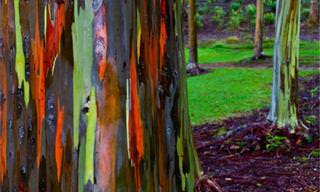
17 Trees Almost Too Beautiful and Strange To Be Real!
Trees are great, aren’t they? Nature is full of great wonders, but few are as startling as these bizarre but beautiful trees.
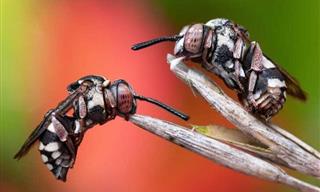
In Pictures: Royal Entomological Society Photo Contest
Check out the winners of the 2023 Royal Entomological Society photo contest.
 3:29
3:29
Watch This Adorable Pika Steal Food from Its Neighbors
This thief of a pika found an interesting way to find food.
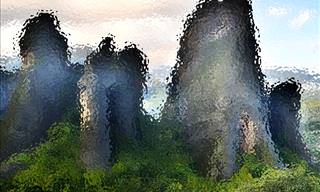
Can You Guess the Famous Geological Formation?
Can you recognize the world-famous geological formations and landscapes that are blurred out in these pictures? Give it a go and see how many you get right!
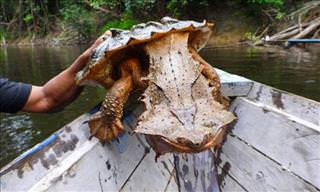
Have You Ever Seen Animals As Odd As These?
These animals will shatter any stereotypical notion of what, say, a pig, or a turtle, should look like. Here are 15 animals you've probably never seen before.
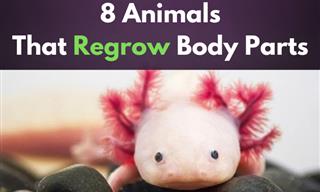
8 Animals With the Ability to Regenerate Whole Body Parts
Meet some of the most remarkable members of the animal kingdom that possess the ability to regrow body parts.
 5:51
5:51
Tornadoes are Awfully Common in the US, But Why?
Why are there an average of 1.200 tornadoes in the US per year and why are the majority of these tornadoes centered in one region?
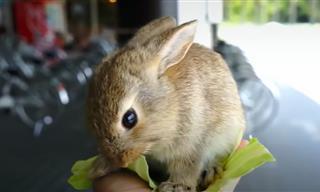 4:34
4:34
Why Is This Japanese Island Full of Rabbits?
The Japanese island of Okunoshima is inhabited almost exclusively by rabbits, but why?
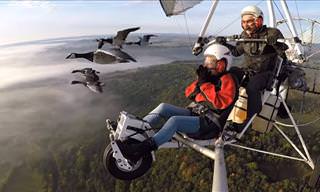 4:20
4:20
This Pilot Loves Nothing Better Than Flying with Birds!
Birds of a feather flock together, and these birds are no exception as they take to the skies with a microlight pilot that they believe to be their mother.
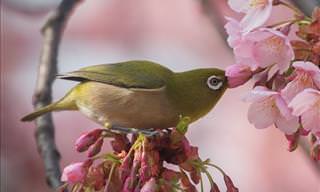
See How Japan's Nature Changes with the Seasons
These photos depict the purest forms of nature in Japan. And they are stunning!
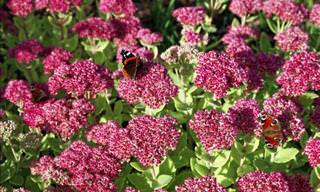
Cover Your Garden with These Pretty Evergreens
Give your garden a little makeover with these 10 beautiful evergreens.
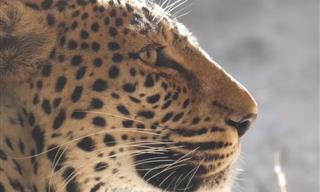
The Beauty of Wild Cats in 14 Mesmerizing Photos
Enjoy these incredible images of wild cats thriving in the wild.
 8:06
8:06
Why Elephants Are More Resilient to Cancer Than Mice
Scientists have made a curious observation - large animals, like elephants, are a lot less likely to get cancer than small ones, and this is why...
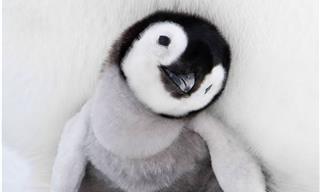
These Beautiful Photos Depict Penguins in All Their Glory..
These photos will melt your heart with cuteness.

Walk Through the Stunning Landscapes of Oregon, USA
Take a look at the stunning photos of photographer Ross Lipson.
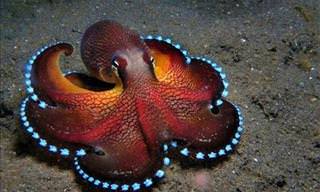
These Ocean Species Look Like They're From Another Planet
These ocean species are unlike anything I've ever seen before.

Gaze in Wonder at These 35 Amazing Photos of North America
North America has so much wonderful natural variety that it's easy to see why many believe it was blessed by God himself. Here are 35 amazing photos.
To enable your Ad-Free Subscription, please fill the fields below
Your subscription was successful, now you can enjoy an ad-free experience!! Note: To make sure you get no ads, please make sure to log in to your account. If you are logged in already, then refresh the page. The subscription can be cancelled at any time.


